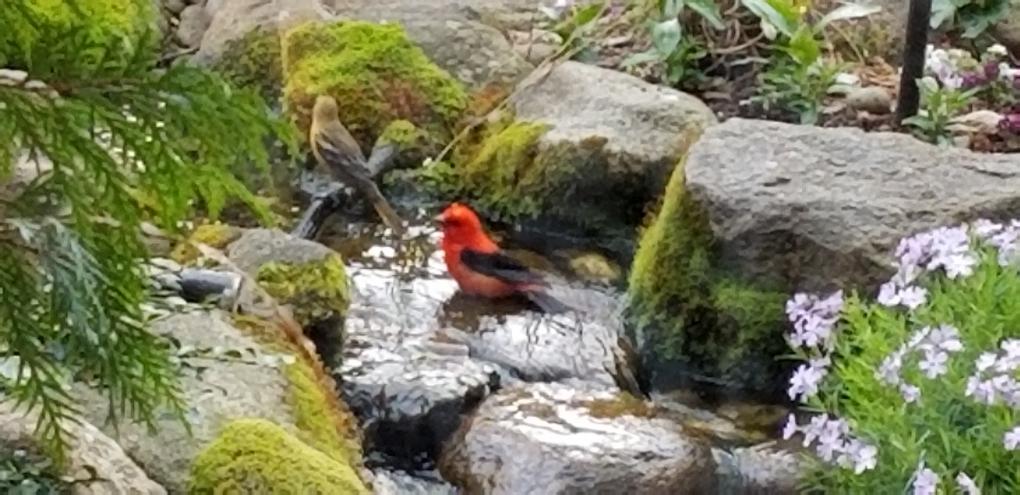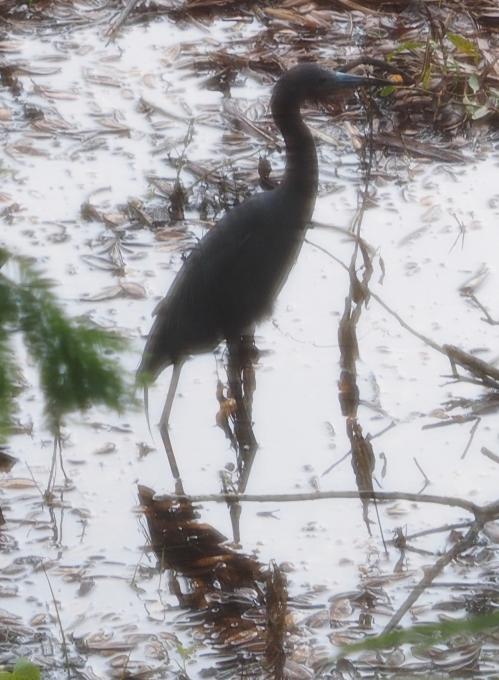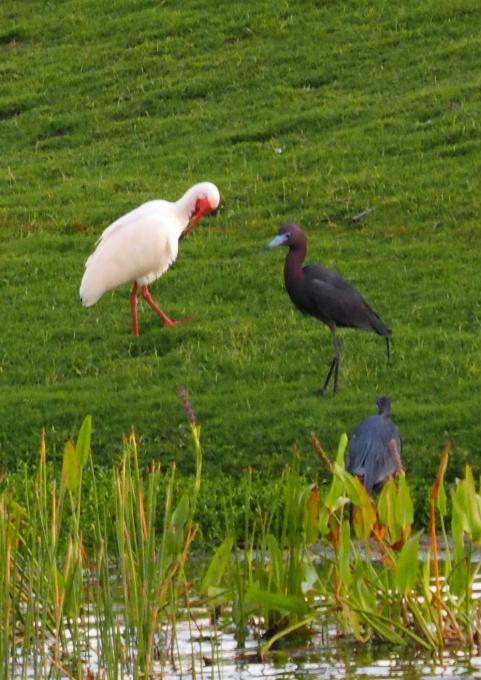The Cornell Lab Bird Academy › Discussion Groups › Joy of Birdwatching › Activities: Exploring Bird Habitats
-
One of my favorite places to go birding it the rookery at UT southwestern. It is in the middle of Dallas, and it has nesting snowy egrets, cattle egrets, and more. The habitat has mature live oaks with an open area, but then it also had some dense understory, that so I can’t see the middle very well. I have been thereafter a storm and it’s interesting to see the amount of fish laying on the pathway. Where did they come from?? I can’t see if there is any water in the middle. I think one of the forks of the trinity river maybe near the area. Vs the my backyard. I have a big open grass area with raised beds that have native plants, it backs up to a green belt with tall mature tree. Not far alway is water where the egrets could eat., but they don’t nest in this type of habitat
-
Activity 1: I visited the Hamilton Waterfront Trail which is an aquatic habitat. The trail runs between the shoreline of Lake Ontario on one side and some marshland on the other. It is abundant in Red-winged Blackbirds who love to perch on the cattails in the marsh. I also saw some gulls (unsure which species) flying overhead, some terns (unsure which species), and Canada Geese. I also visited Beamer Memorial Conservation Area, which is a more wooded habitat. The trail I walked is right at the top of the Niagara Escarpment and it is punctuated by breathtaking views of the city below (Grimsby). The birds were more difficult to spot in this area, as they were well-hidden in the trees. I could certainly hear them, though. I heard mostly songbirds, but struggled to confidently identify the birds I heard. I saw, and heard, a Bluejay and some sort of raptor. I suspect it was a hawk of some kind. I also saw a couple of robins. At one point, I thought I heard a woodpecker, but it may have been just the trees creaking in the wind.
Activity 2: I used the two spots in Arizona. Some of the species that can be found at Roger Road are Red-naped Sapsuckers, Black-tailed Gnatcatchers, Wood Ducks, Hooded Orioles, a few sparrow species, a few swallow species, and Cooper’s Hawks. This leads me to conclude that this hotspot may be a mix of a forested and an aquatic habitat. Some species found at Mt. Lemmon are Swainson’s Thrushes, Williamson’s Sapsucker, many species of hawks, Cassin’s Vireos, and Painted Redstarts. I think this hotspot is a forested habitat, maybe of a higher altitude. -
Activity 2. The two British sites, Down House and Sevenoaks, host species or subspecies different from their North American counterparts and appear to be different collections of habitats. At Down House, the 44 total species include birds that frequent a variety of land habitats, including humanly built and humanly frequented ones –gardens, open fields, and young woodland. For example, the three types of pigeons/doves tend to live in farms and fields, and the corvids and raptors are adaptable generalists. The ring-necked pheasant likes grassland and cropland. The woodpeckers favor woodlands. The Eurasian nuthatch likes deciduous or mixed woodland. The Common Chiffchaff is a warbler that favors wooded and scrubby habitats. (The gulls seemed to be passing overhead). EBird lists 3 rose-ringed parakeets there, I always thought of the parakeet as a cage bird in Europe and North America, but I gather there are wild populations now, probably escaped from city cages. The Sevenoaks birds, 135 total species/sub-species, inhabit either a water-based or land-based habitat, including deep and shallow lakes, ponds, rivers and riverbed, grassland (scrub) and woodland. The water birds include swimming birds (a great variety of ducks, swans, geese) and long-legged waders and other shorebirds (herons and egrets, a Eurasian Spoonbill, Eurasian Oystercatcher, Pied Avocet, Eurasian Curlew, plovers, snipes, sandpipers, gulls). Kingfishers need water, but I’m not sure into what category of bird they fall. The trees and scrub support woodpeckers, warblers (some live in reeds), swallows, cuckoos and swifts. There are also corvids and raptors (Common Buzzard, Red Kite, Eurasian Sparrowhawk, Carrion Crow) with some overlap with Down House species.
-
Activity 2: since I have friends in England and I've been to and around London, I thought I'd check out the two sites near there, and it was truly amazing to see how obvious the answer to the environment would be: around Down House the largest numbers were meadow and grassland types: pheasant, doves, partridges. The only surprise there were the several types of gulls that were mentioned--perhaps they are like the ones here, having become "urbanized" (and being rather a pest around shopping centre parking lots....). The other site, Sevenoaks, is a nature reserve, very close to Down House and lists especially various types of geese, swans and ducks--again a very obvious list, as it is located around several small lakes.
-
Activity 1: One trail near me that is a hotspot for birders consists of open pastures and scrubby fields, wetland and boggy areas and a river. This habitat attracts birds that like open habitats, wetlands and being near water. Birds I observed there recently included Tree and Barn Swallows, Red-winged Blackbirds, and an Eastern Meadowlark. Other bird species that like this habitat have also been sighted here such as Northern-rough-winged Swallows, Grasshopper, Song, and Field Sparrows and a Great Blue Heron.
A second birding hotspot that is near me is in the Blue Ridge Mountains. The habitat is primarily forested with thickets of mountain laurel and rhododendron. This area attracts birds species that prefer forested areas. Birds I have heard or seen there include a Scarlet Tanager, Wood Thrush and Ovenbird. Other bird species that have been observed here include several different types of warblers (Cerulean, Hooded, Black-throated Blue, Chestnut-sided). -
Activity 2: The more aquatic habitat around Sevenoaks seems to have more waterfowl, waders and shorebirds along with the raptors and others. The open fields and sporadic areas of shrubland around Down House seem much more suite to birds who prefer those types of habitats.
-
Activity 1: In and around the Lithia Park Reservoir in Ashland, OR we have a Great Blue Heron that comes back in the morning or afternoon, the occasional pair of Canada Geese and the usual Mallards. I have also seen a Belted Kingfisher several times but only in early morning. Yesterday, a Red-breasted Sapsucker was tapping away at tree on the edge of the reservoir. This time of year I have also seen Dark-eyed Juncos and Spotted Towhees foraging around the reservoir.
Further up the hill, on one of the partially forested trails above Ashland, the Warblers, Tanagers and Hummingbirds passing through have been seen recently. A few days ago a Cooper's Hawk was hanging out midday, I suppose looking for lunch or digestng the one he just had. -
We were able to take a trip to Lake Michigan last weekend. About 2 hours from our home in the Northeast WI. This habitat showed us quite a few different water birds that we don't often see in our area. The most prominent was the seagull. Many of them hover over the lake to catch fish and other food. When Point Beach State park is busy with tourists by the pavilions, the seagulls also love to scavenge for food scraps from them. The other bird we saw was the Cormorants. While they are not as prevalent in this area as the seagulls, they are around. Lastly, we were able to see a killdeer on a sandy, grassy area up from the lake shore. Closer to our home in the woods of Wisconsin, we also have a large lake nearby where we also observe some of these same water birds, but not to the degree we observed at the larger Lake Michigan.
-
Today I went to a local park to try to recreate a recent virtual bird walk video from the county parks department, where the naturalist showed off the different habitats found in the park and therefore variety of birds common in each one. The areas I walked through included grassland, upland forest, riparian forest, field, and a little bit of shrub-scrub wetland. I could hear lots of birds but only see a few. I was able to notice how the bird songs and calls changed from each area, and use Merlin to identify a few of the calls, like the field sparrow which I heard the entire loop around the grassland but nowhere else. I'm also positive I heard an owl in the upland forest!! It sounded the closest to Great Horned Owl on Merlin (of the birds I compared it with). Birds that I saw and ID'd with Merlin were a Warbling Vireo in the upland forest and a Tree Swallow at the edge of the forest and pond.


-
Activity 1 - The two areas I visited are a large recreational park near our home and a state park near our home. The interesting thing is that both are about a one mile walk from our home, and they have very different bird life. The recreational park is full of nesting parrots, and ravens emptying the fast food bags. Also the usual pigeons and sparrows. The habitats at this park include sycamore trees and pine trees, and at some times of the year, a small stream runs through it. The state park is a very different habitat, it is very dry chaparral, mountainous with more lush canyons, but otherwise pretty dry. Today we saw huge birds soaring above the canyons, there were four of them. We saw them about a month ago also, so this must be their habitat. They were soaring at a high altitude, and so I never saw anything but the profile of them in the air. I believe they were turkey vultures, although it is not out of the range of possibility that they were California Condors. We also saw quail - the California State Bird - which I have never seen in the wild before. Pretty fun.
-
Today I visited Sydney Olympic Park where there is a great wetland reserve. I saw a Great Egret, White-faced Heron, and many Black-winged Stilts (which I adore), Black Swans, Fairy Wrens, Swallows, Black-fronted Dotterels, Silver Gulls, Royal Spoonbills, and Chestnut Teal ducks. The water on the reserve is shallow and marshy is many areas, and these were the places the Stilts and herons hung out. The ducks and swans were on islands and banks in the deeper areas. The Fairy Wrens were catching bugs in the shrubby area at the edge, and the swallows just swooped over the whole area, catching lunch.
Notably absent were the Red-necked Avocets I saw in the warmer months amongst the Stilts. They must have migrated north for the winter. The pelicans that are usually in the area were also absent, and whilst I did see a few cormorants, they were not present is as many numbers.
Hope you norther hemisphere birders are enjoying the abundance of birds in your areas!
-
Activity 2 As others have said, Roger Road must be near some kind of body of water, with over 250 sightings. The list included ducks, so maybe it was a pond. Mt. Lemmon had only 120 species listed and included many hawks and owls, indicating fields and meadows.
-
Activity 1-My favorite place to walk is Croton Point Park in Westchester, NY.
It is located on the Hudson but also it has a capped landfill. The meadows of the landfill attracts red-tailed hawks, Northern Harriers, owls, and all kinds of sparrows.
Croton Bay attracts waterfowl such as Mergansers, Buffleheads, and Great Blue Herons.
It is famous for the Bald Eagles and their is an annual Eaglefest every winter.
-
Activity 1
I visited a local wilderness park that encompasses coastal sage scrub habitat as well as vernal ponds. In the sage scrub habitat, I observed several species, including a Great-Tailed Grackle and an Allen's Hummingbird. In the ponds, I observed a Snowy Egret as well as a Ruddy Duck. I also saw swallows and terns flying above the ponds, but I was not able to identify the exact species. -
Activity 2: My initial thought,before looking at numbers or recorded sightings would be that Mt. Lemmon would have a bigger variety and see more birds but after looking at both sites more carefully and getting an idea of their location and habitats it makes sense that the number and types of birds. I am guessing a lot of birds migrate through there or make it a pit-stop. It seems smaller birds, song birds are very common whereas at Mt. Lemmon there are larger birds, perhaps less migratory? What an amazing spot that must be- so much to see and it must be pretty condensed because the park is not that big.
-
Activity 1 con't
Rockefeller Preserve in Westchester County, NY is one of my favorite places to walk, especially around Swan Lake. Lots of different birds to see from those that make their home here most or all of the year Canada Geese to those that are passing through or just here for a short stay- Green Heron. There is so much wildlife to spot at this Park it never ceases to amaze and surprise. It is a welcoming spot, whether it be by or in the water or further into the woodlands or open fields- there is a place for so many species.



-
1. Near my parents home in Putnam County, NY, which is a development about 10 years old in which the builder leveled all the trees before building and just now are the new trees and more natural areas coming back. One of the neighbors has a few bluebird boxes hung up and the bluebirds and tree swallows take advantage of them every year. In the same development another neighbor has a few feeders hung up that attract 10-20 American Goldfinches as well as other birds at one time. It is a sparse area, not much other wildlife, some deer, a rare squirrel but the birds seem to have made their way back and found comfortable spots to feed and nest. Turkey vultures and a few hawks routinely fly over head. Canada Geese, Robins, finches, sparrow, swallows and bluebirds are common.



-
 Tanagers were in the manmade pond/waterfall in my wooded yard. I also see many woodpeckers, cardinals, nuthatches, and starlings regularly. At the lake about a quarter of a mile down, there are blue herons, swans, mallards, geese and kingfishers. Occasionally eagles are present as well.
Tanagers were in the manmade pond/waterfall in my wooded yard. I also see many woodpeckers, cardinals, nuthatches, and starlings regularly. At the lake about a quarter of a mile down, there are blue herons, swans, mallards, geese and kingfishers. Occasionally eagles are present as well. -

-
Activity 1: Now that some of our local trails have opened, I had a chance to visit a nearby canyon trail. It has upland scrub, some limited riparian, and a pond at the beginning. I heard a lot more birds that I saw, but there were hummingbirds, and a California Thrasher in the scrub area, I heard some drumming in the trees in the riparian section, but was unable to locate the bird. Today there were no water birds at the pond, I have seen ducks and a great blue heron in the past.
Activity 2: I looked at the species ebird lists for the 2 Arizona sites. The Roger Road site appears to have both shrubby/scrubby habitat types and some wetlands features, while the Mt. Lemmon site appeared to have more birds that like forested habitats. -
Exploring 2 English e-bird hotspots
At Down House (a home of Charles Darwin ) was described by Darwin as "being situated on rather high table-land, has somewhat of desolate air ... The charm of the place to me is that almost every field is intersected (as alas is our's) by one or more foot-paths— I never saw so many walks in any other country", I used e-bird to screen just 2020 sightings and there were only 27 species seen by only 2 birders. There were only birds of the fields and scattered forests. No water birds of any kind. The land has had a house for hundreds of years and there are enough old trees for a woodpecker population. Several raptors were also observed and introduced species (ring necked pheasant) by the English gentry.
Sevenoaks is a wildlife preserve which includes ponds (looks to be freshwater from map). 75 species were observed in the same 2020 period. There were many water-birds including herons and ducks and geese. There were most of the birds from the Down House as well.
Similar to many of the observations from classmates in the course so far, the presence of water nearby enriches the variety of birds and their visibility. -
Hi, all. I live in the southeast corner of British Columbia, Canada. I walk daily near 2 ponds and a larger lake in a park. I've seen ducks, hawks and bald eagles at the ponds and the lake. However, the lake is the only place I've seen loons, flycatchers and sandpipers. The ponds are the only place I've seen Red-winged Blackbirds. (This difference in sitings could be my own limited ability to see birds that are there.) I live across the road from a vacant grass field. I hear different bird songs than I do on my walk through the park. I think I can identify the song of the Western Meadowlark which is the only bird I've identified in the field.
-
I looked at the bird sitings of Down House and Sevenoaks. I think Sevenoaks must be an aquatic habitat with a tidal pond and marsh/ wetlands as the birds sitings include swimming birds, shore birds and sea birds. There bird sitings also included doves etc that are habitat sharers. Down House may be predominantly scrub-shrub (maybe a field) with a forested area. The sitings that made me think shrub-scrub were pheasants, swallows, and larks. I thought there was a forest because of the nuthatches, finches, jays and crows.
-
Exploring Bird Habitats Activty 1 visit 2 different habitats and look for differences
In Estero FL (longer than usual due to COVID 19) and having hip issues so I went to my lanai (second story in a strip of big Live Oak trees and Palms) and a spot on a nearby pond where I go all the time. The rainy season has started and there is a rainy season puddle off my lanai making the sightings much more similar than they are in mid winter dry season.
From lanai I only saw a blue jay in the tree but was slow with the camera and you all see them regularly. Then a big bird flew in and landed in the puddle. It was a little blue heron. He stood still for a while and then dashed over to the edge of the puddle and speared a tree frog. He/she then went back to edge near the bushes and waited again. A second one came but left quickly. Based on the noises from the trees, most frogs have emerged from the pool and it is not yet full of this years crop of pollywogs and maturing frogs.
When I went over to the pond I saw redwing blackbirds and two interesting waterside sites.
One was a reddish egret (new bird for me this week) seen above with an Ibis. Below was where 2 of the ibis that are usually there went. Lok in the tree to their right and there was also a great blue heron in a place one might expect a raptor. He was about 40 feet above the mangrove and most smaller pines. I had seen the ibis but missed the great blue with out the aid of my 300mm of telephoto.

I went to familiar places and saw unfamiliar sights. Fun with birding.. -
I visited an area with open grassy fields alongside wetlands surrounded by a little bit of young forest. We were able to see Great Egrets, a Green Heron, and many Canada Geese in the wetlands, swallows and warblers in the grassy areas and trees, as well tons of Red-winged Blackbirds everywhere. In contrast, I live in an urban area, and the birds I observe are unlikely to be egrets and herons, but the Red-winged Blackbirds seem to really like it here too!
Read More:
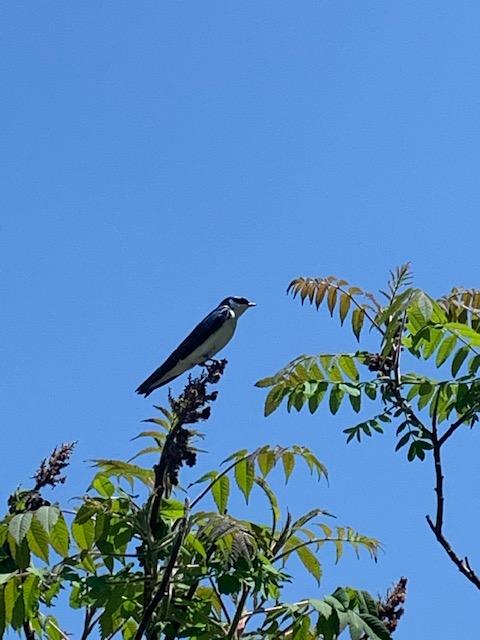
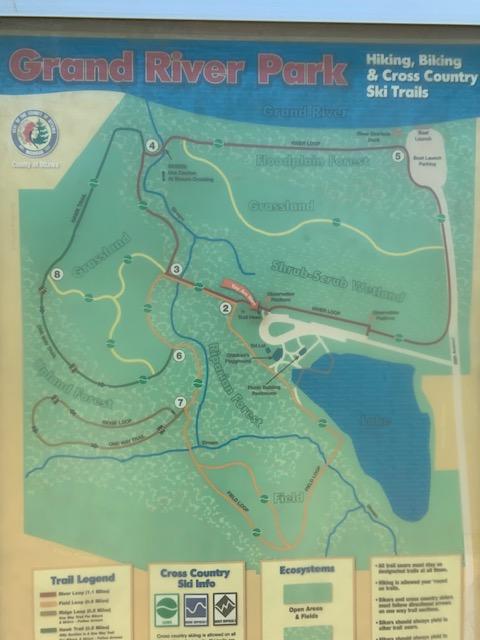
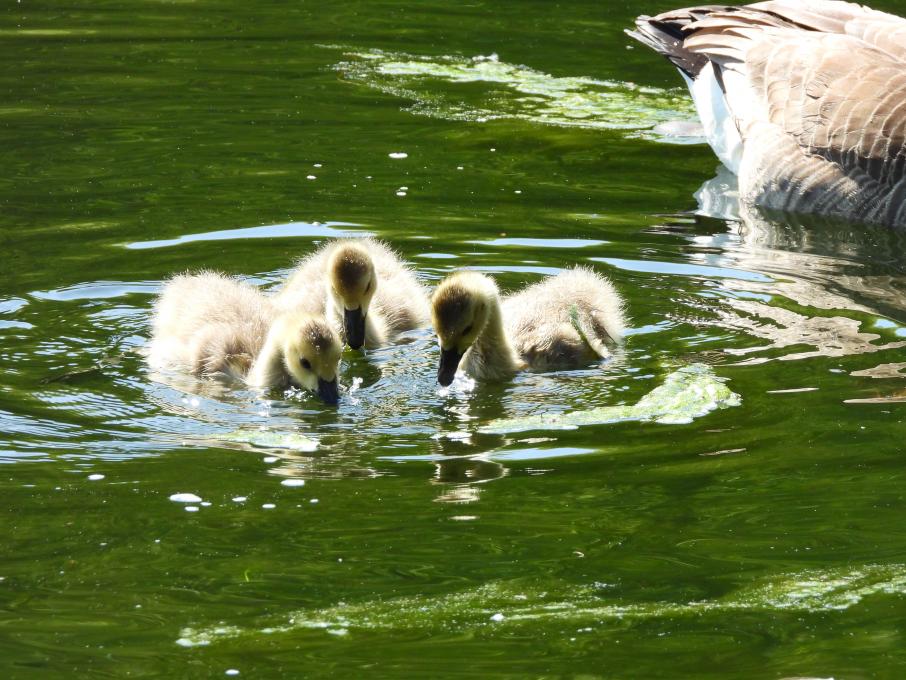
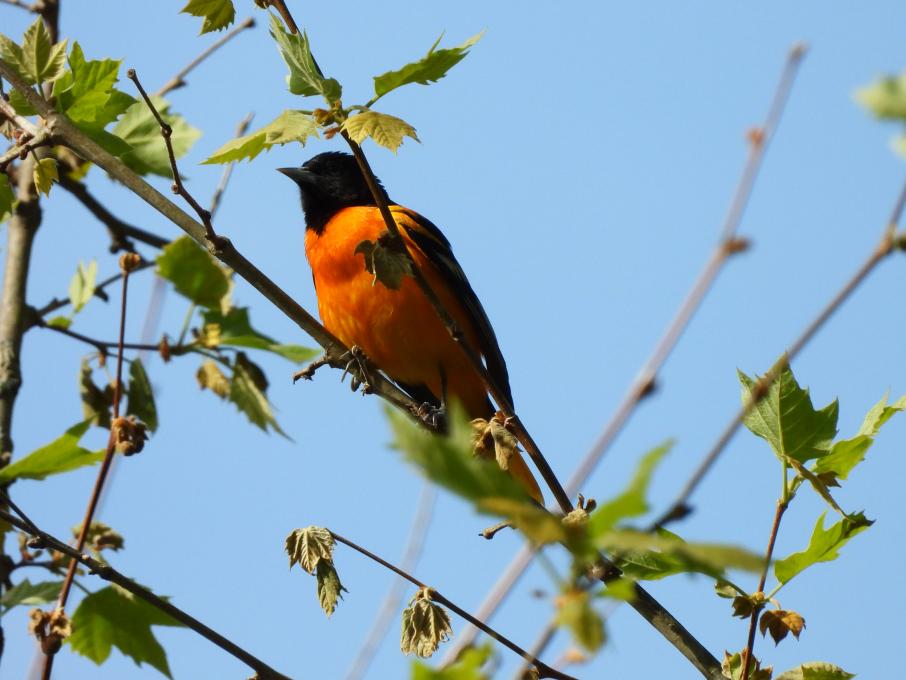
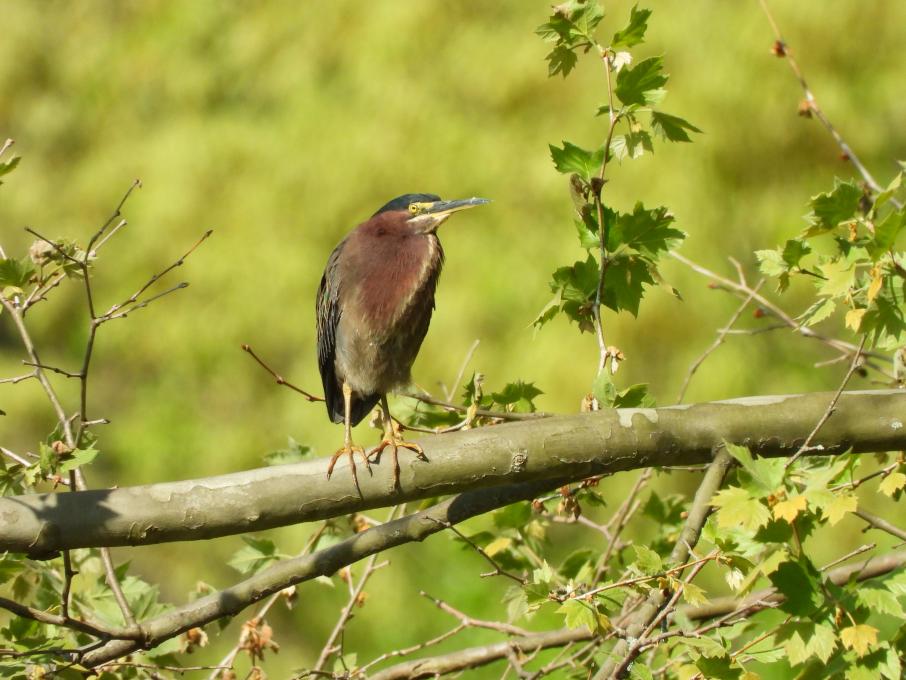
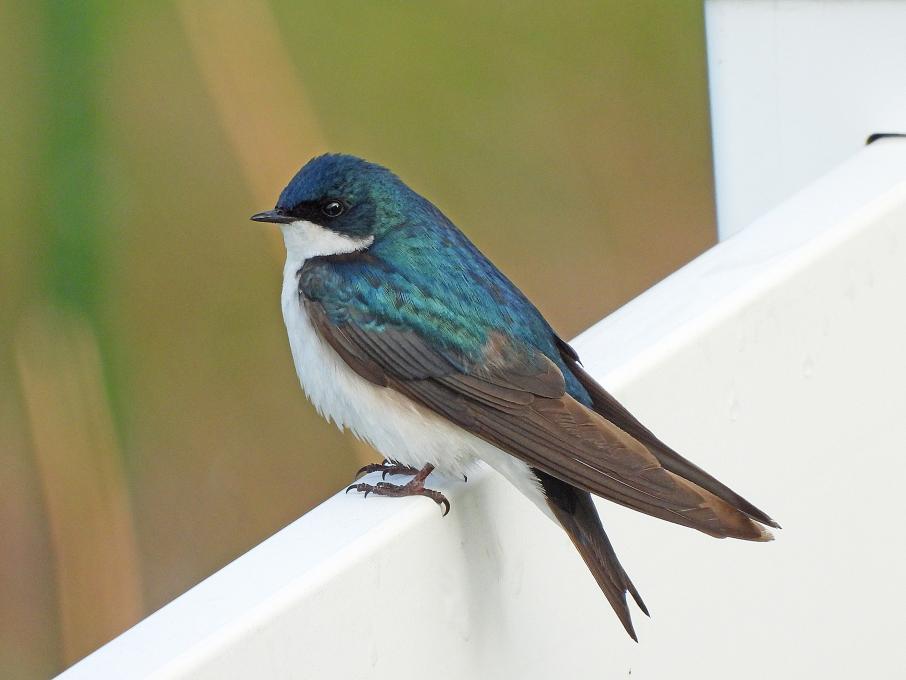
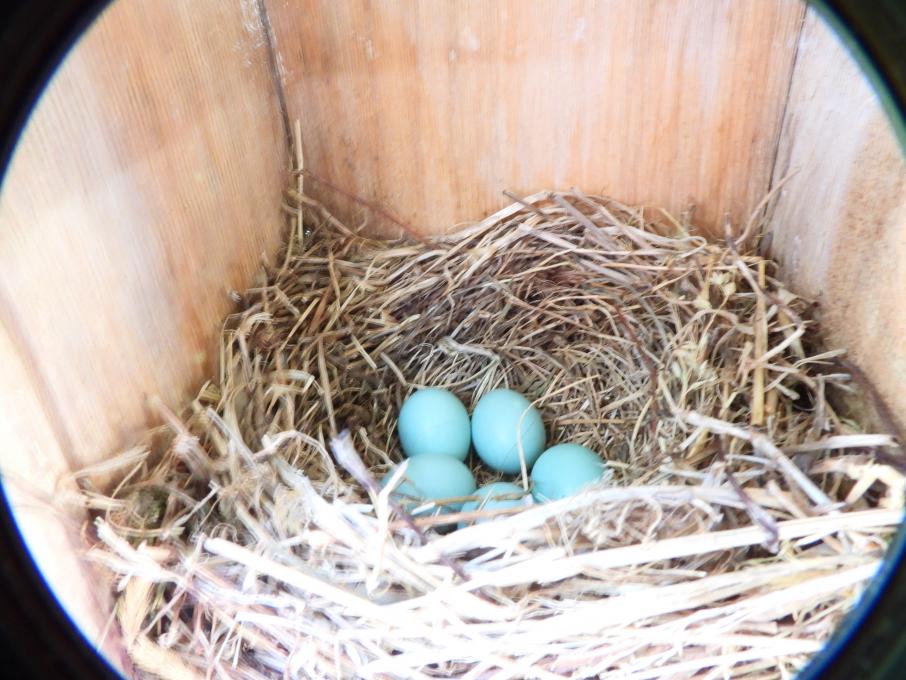
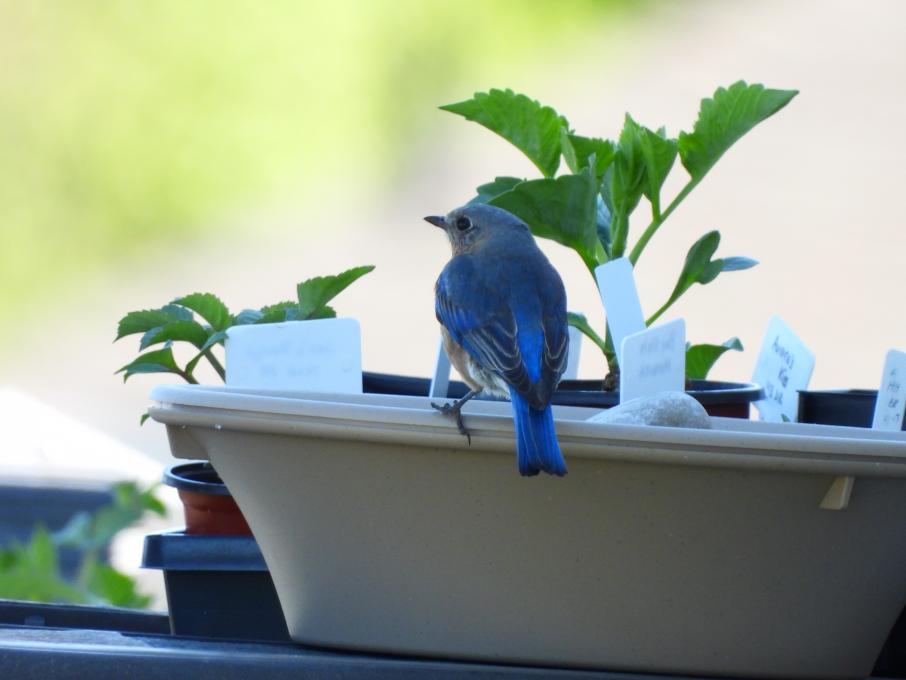
 Tanagers were in the manmade pond/waterfall in my wooded yard. I also see many woodpeckers, cardinals, nuthatches, and starlings regularly. At the lake about a quarter of a mile down, there are blue herons, swans, mallards, geese and kingfishers. Occasionally eagles are present as well.
Tanagers were in the manmade pond/waterfall in my wooded yard. I also see many woodpeckers, cardinals, nuthatches, and starlings regularly. At the lake about a quarter of a mile down, there are blue herons, swans, mallards, geese and kingfishers. Occasionally eagles are present as well. 